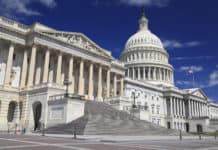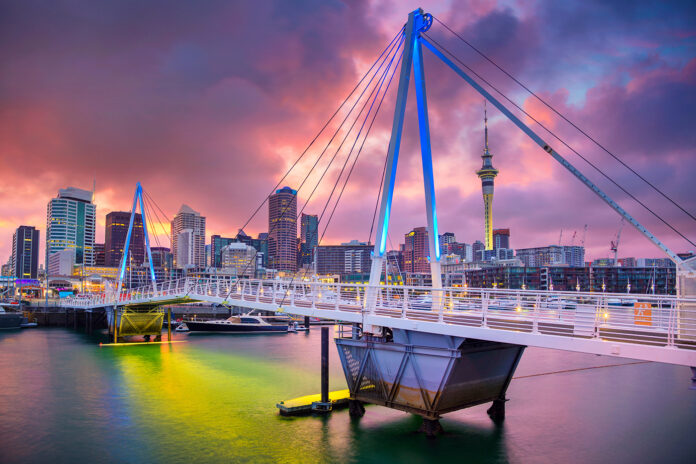The “Land of the Long White Cloud” would be a fitting nickname for any country that embraces cannabis, but that’s not how New Zealand came by its unofficial moniker. “Long white cloud” is the English translation of Aotearoa, the indigenous Māori’s name for the country. As legend has it, Kupe, the first Polynesian to set foot on New Zealand, thought he was approaching land after seeing a massive cloud hovering in the sky. His wife yelled out “He ao! He ao!” (“A cloud! A cloud!”), and things progressed from there.
Prior to colonization by the British in the early 1800s, cannabis did not exist on any of New Zealand’s more than 700 islands. Plant material—but not plants themselves—arrived in the mid-1800s and immediately became popular with the population. “Cannabis cigarettes” were widely available and touted as a treatment for asthma and bronchitis. By the 1880s, cannabis was used as dental anesthesia and recommended to treat neuralgia, corns, and chilblains. Chlorodyne, which contained cannabis extract, was used to treat children’s coughs.
Into the early 1900s, cannabis continued to serve as a medicinal remedy for several ailments. Cannabis-based balms, tonics, tinctures, resins, and more were prescribed by health professionals, and residents could obtain them with a simple trip to the local pharmacy. Unfortunately, New Zealand was not immune to the twentieth-century migration away from plant-based medicines. Drug policies hitting the shores of the United States, England, and Australia landed on the island nation’s beaches early in the 1900s. Between 1912 (the year the Sherley Amendment outlawed misleading label claims in the U.S.) and 1925, the same international anti-drug policies that pushed out natural remedies drastically shifted New Zealand’s legal and social climate around the likes of opium, heroin, cocaine, morphine, and cannabis. Thankfully, New Zealand still allowed the use of cannabis by prescription, and recreational use was a non-issue.
In the mid-1900s, everything changed. A growing number of New Zealanders embraced recreational use, and the country caved to pressure from the World Health Organization and stopped importing cannabis. Nevertheless, police continued to see an uptick in recreational use. To combat the problem, the country established a drug-enforcement agency in the mid-1960s. Unlike in the U.S., cannabis remained available in some pharmacies until the mid-’70s, when the notorious Misuse of Drugs Act took effect across the nation. New Zealand’s trans-Tasman governmental relationship with Australia only exacerbated the war on drugs. Legislation labeled marijuana a “high-risk” drug and criminalized possession of the plant, and the government reclassified cannabis as having no medicinal benefits whatsoever.
The public opinion of cannabis and its status as a highly addictive drug carried through the 1970s and ’80s, fueled in large part by the Drug Abuse Resistance Education (D.A.R.E.) program in the U.S.
Public prejudice and, consequently, legal prohibition began to shift worldwide after endocannabinoid-system discoveries by researchers including Raphael Mechoulam, Lumir Hanus, and William Devane in 1992. California legalized medical cannabis in 1996, and other states followed. In 2003, the New Zealand chapter of the National Organization for the Reform of Marijuana Laws (NORML) successfully lobbied the Labour-Greens to include 114 recommendations for cannabis reform in the political party’s platform.
One year after adult use kicked off in Colorado in 2014, New Zealand’s health minister approved cannabis-oil treatment for a 19-year-old patient who had been in an induced coma for fifty-four days to control a persistent epileptic seizure. The event marked a historic moment for the country, as cannabis had not been prescribed legally for more than forty years. Fast forward to 2017, and a poll commissioned by The Drug Foundation revealed 59 percent of Kiwis supported medical legalization. Just one year later, the government amended the Misuse of Drugs Act to incorporate many long-overdue changes, including no prosecution for terminally ill patients who used cannabis for relief of symptoms. The amendments also removed CBD from the list of controlled drugs, reopening the door to legal importation of cannabis.
Most recently, the Medical Cannabis Scheme took effect in April 2020 with the commencement of the Misuse of Drugs (Medicinal Cannabis) Regulations of 2019. At its root, the scheme’s purpose is to improve patients’ access to legal medicinal cannabis. As it was a half-century ago, plant medicine is available with a doctor’s prescription.
In October 2020, a referendum seeking legalization of adult use failed by a narrow 2-percent margin, so possession of any amount of cannabis without a doctor’s prescription still carries the risk of fine, imprisonment, or both.
Today, the Land of the Long White Cloud has a thriving licensed-and-regulated medical cannabis program. The country is one of nearly fifty nations worldwide with reasonably broad medical programs.

Lance C. Lambert has spent years cultivating brands and telling stories, primarily in the mainstream digital media and marketing space prior to making the jump to the legal cannabis industry in late 2013. In 2021, he planted his knowledge and passion-first attitude at GreenBroz, where he’s tasked with growing the company’s footprint at home and in emerging markets around the globe.










